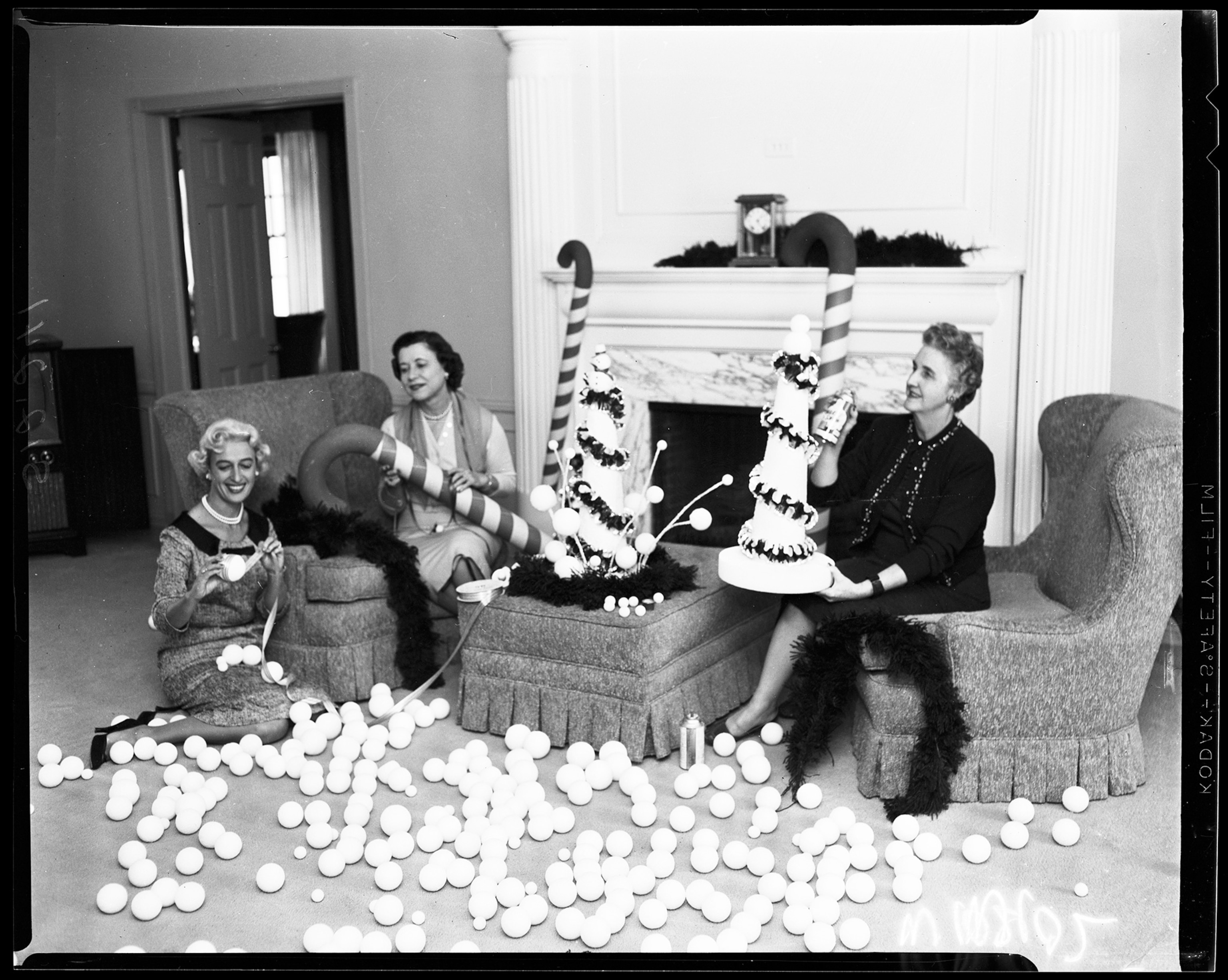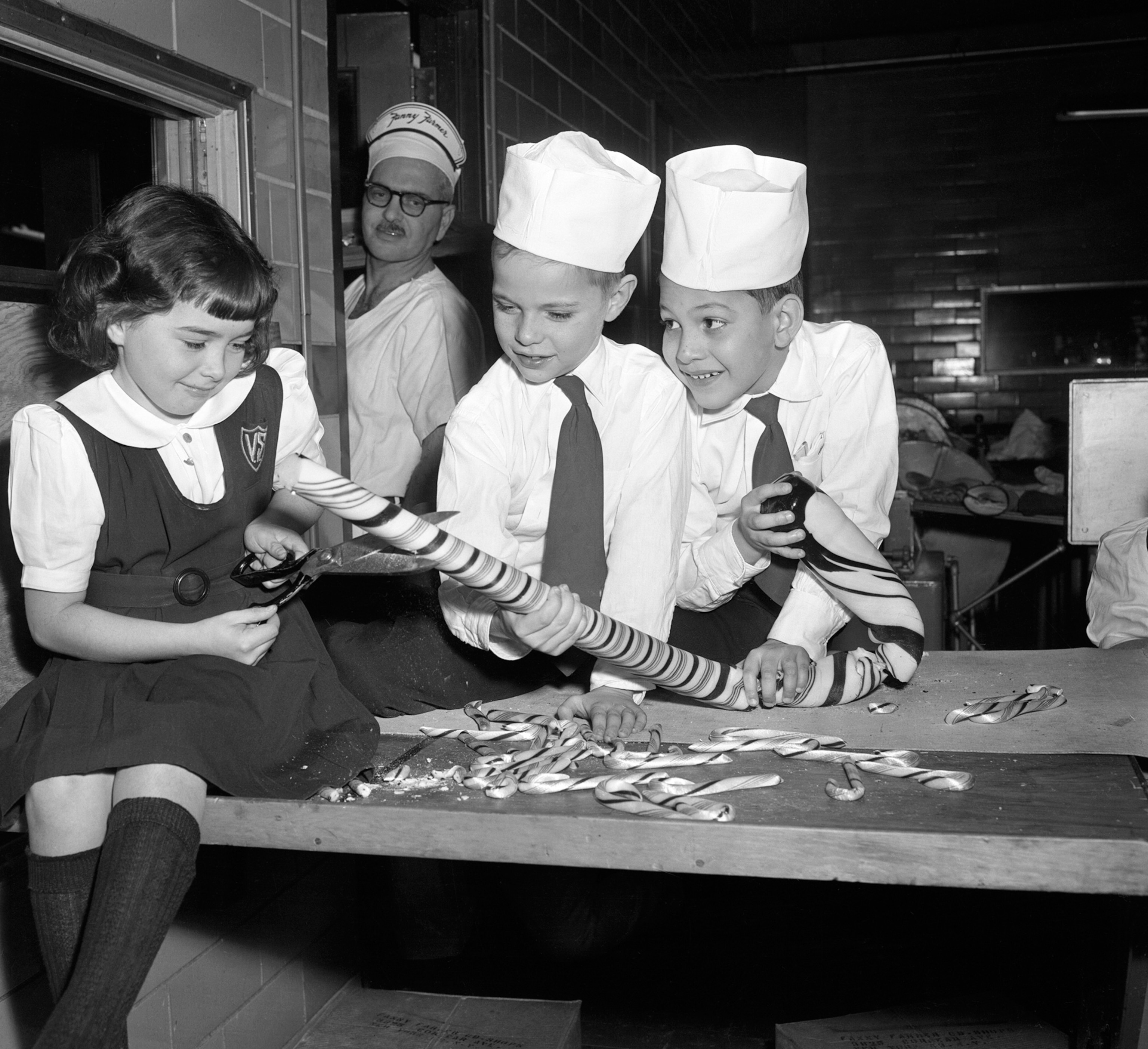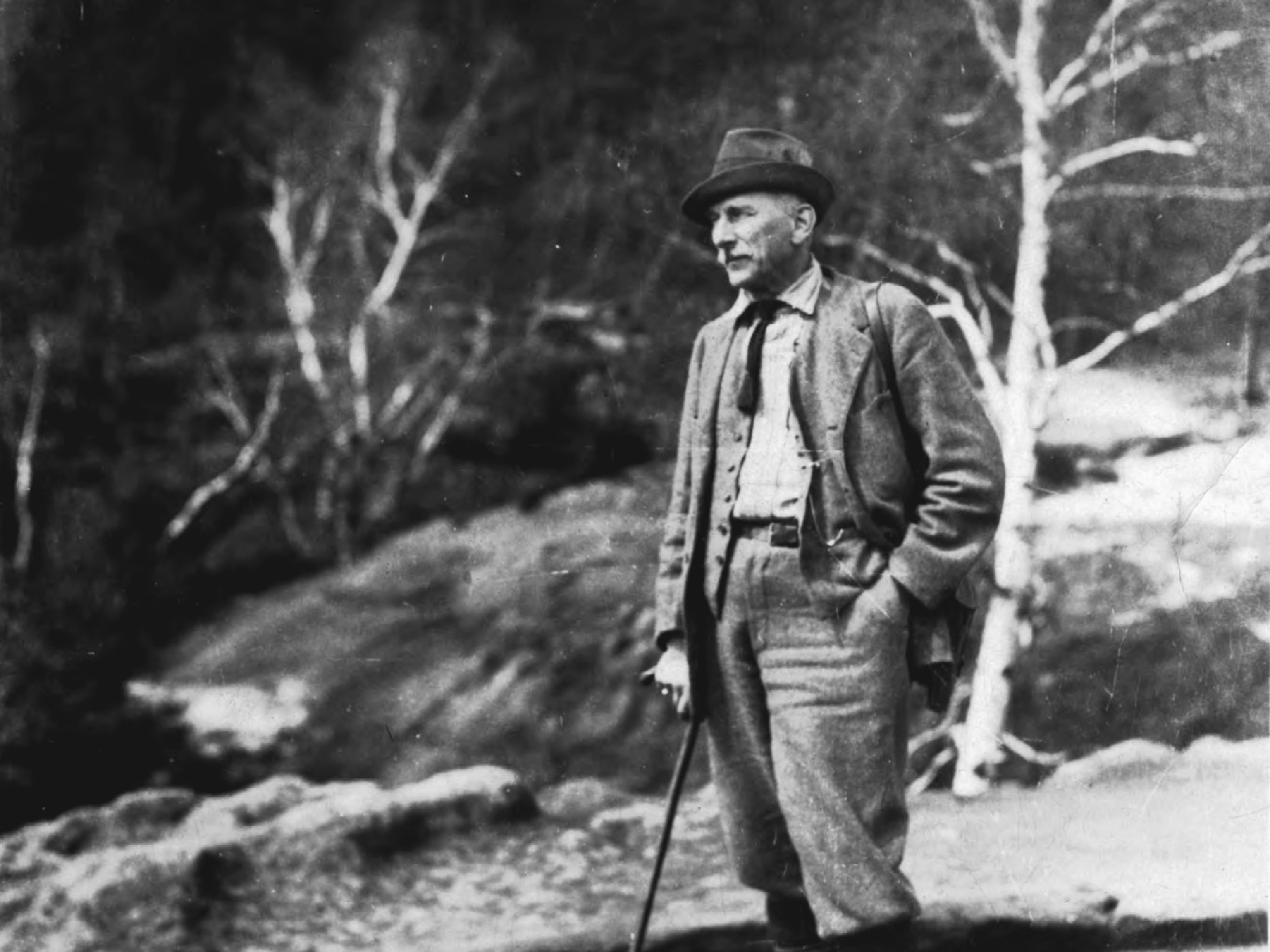
The Sweet and Sticky Story of Candy Canes
Candy canes are now as much a feature of Christmas as carols, evergreen trees, and mistletoe, but we don’t know much about them. We don’t know who invented them or why, or when and where they first got their red-and-white stripes. What we do have are a lot of guesses, gossip, and rumors.
The earliest proto-candy-cane was most likely a plain white sugar stick of the sort used by frazzled parents of the 1600s as pacifiers for fussy babies. The stick got its cane-like hook, one unsubstantiated story claims, when a 17th-century choirmaster at Germany’s Cologne Cathedral convinced a local candy maker to bend sugar sticks into the shape of shepherd’s crooks, to amuse bored and restless children during Christmas mass. An alternative story holds that the hook was invented simply to make candy sticks easier to hang on Christmas trees.
By the 16th century, European Christians had adopted the tradition of decorating trees in their homes during the Christmas season. Folklore often gives credit for the Christmas tree to Martin Luther who, while walking home one winter night, supposedly admired stars winking through the branches of an evergreen, and so brought a tiny tree home to his family and decorated it with candles.

While Luther’s starry walk may be apocryphal, enthusiasm for decorating trees seems to have run high, since the town of Ammerschweier in Alsace felt compelled to pass a restrictive ordinance targeted at those with a tendency to go overboard, decreeing that no person “shall have for Christmas more than one bush of more than eight shoe lengths.” The early trees were decorated with fruit, nuts, candies, cookies, and paper cones, and it does seem plausible that a hook might have been added to candy sticks around that time as a tree-hanging convenience.
But what about the candy cane’s iconic flavor? No one knows who first came us with the idea of combining peppermint with sugar to make peppermint candy. Peppermint has a long history as a cure for digestive upsets, dating back to ancient Egypt where it’s mentioned in the Ebers Papyrus (1550 BCE) as a remedy for stomach pains. Roman scholar Pliny the Elder, in his 37-volume Natural History written in the first century CE, lists 41 medicinal uses for mint (probably both spearmint and peppermint; often early authors lumped the two together). Mint, according to Pliny, was good for gastrointestinal ailments, liver disease, ulcers, hiccups, and snakebite. He also adds that mint juice is “good for the voice when a person is about to engage in a contest of eloquence,” and mentions that it’s also nice in sauces.

Seventeenth-century herbalists routinely recommend mint for upset stomachs and frayed nerves; and the early European colonists, who doubtless suffered from both, brought mint with them to America. Lewis and Clark, for their epic 1804-6 expedition to the Pacific, packed “essence of peppermint” in their medical kit. Altoids—now America’s top-selling mints—were invented by Smith Kendon of London in 1781.
Peppermint’s distinctive cooling taste, described by one writer as a cross between pepper and chlorophyll, was also traditionally used to disguise the taste of other, more awful-tasting drugs. In the late 18th century, for example, when castor oil became a popular tonic, it was often served up to unhappy recipients floating on peppermint water.
Commercial production of peppermint for peppermint oil—the “essence” toted westward by Lewis and Clark—seems to have begun in the mid-18th century in England and in the early 19th century in the United States. It first took hold in upstate New York, and gradually spread west to Ohio, Indiana, and Michigan. By the early 20th century, over 90 percent of the world’s peppermint and spearmint oils came from Michigan.(See “A Taste of the Season: The Art and Science of Peppermint.”)
As elusive as the peppermint-sugar connection and the origin of the candy cane hook are the cane’s red-and-white stripes. Some sources claim that red-and-white-striped canes were rare prior to the late 19th century, since Christmas cards of that period show nothing but plain white candy

canes. On the other hand, candy makers clearly knew how to make stripes. A cookbook of 1844, for example, titled The Complete Confectioner, Pastry-cook, and Baker, includes among its “Upwards of Five Hundred Receipts,” instructions for making striped peppermint candy sticks.
Children’s literature of the mid-19th century mentions striped candy sticks and candy canes. Laura Ingalls Wilder’s Little House in the Big Woods, for example, is set in the “big woods” of Wisconsin in the late 1860s. At Christmas, Laura describes the thrill of getting in her minimalist stocking a pair of bright-red wool mittens and “a long, flat stick of red-and-white-striped peppermint candy, all beautifully notched along each side.” “Tom Luther’s Stockings,” a tale that appeared in the Boston-based Ballou’s Monthly Magazine in 1866, mentions “mammoth candy canes” displayed in a shop window; and in “Benny’s Letter,” a story printed in the children’s periodical The Nursery in 1874, Benny, whose family is clearly far better off than Laura’s, writes a letter to Santa Claus asking for a drum, a pair of rubber boots, a pencil that writes in red and blue, a writing desk, a rubber ball, a pistol that shoots paper caps, “a new sled with Gen. Grant on it,” some writing paper— and a candy cane.
The earliest documented appearance of candy canes in America is generally attributed to August Imgard of Wooster, Ohio, a German immigrant who, in 1847, erected what may have been Ohio’s first Christmas tree. The tree stood on a revolving platform and, as it turned, a hidden music box tinkled a Christmas melody. According to the National Confectioners Association, the little tree was a blue spruce, topped with a tin star and ornamented with paper chains, cookies colored with brown sugar, gilded nuts, and (probably all-white) candy canes. People flocked to see it, and soon both trees and candy canes were on their way to becoming Christmas traditions.
At the time, candy canes were pretty labor-intensive to make, requiring assembly, rolling and shaping by hand. In the 1919, however, Bob McCormack started a candy company in Albany, Georgia (modestly known as McCormack’s Famous Candy Company) that began making candy canes. Production skyrocketed when McCormack’s brother-in-law, Father Gregory Keller, a Catholic priest, invented a machine that automatically put the crook in the candy cane. Today, nearly two billion candy canes are made every year.








